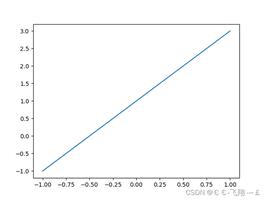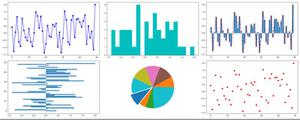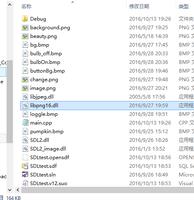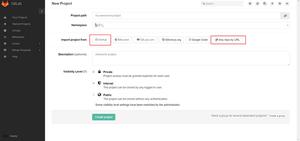matplotlib:如何防止x轴标签彼此重叠
我正在用matplotlib生成条形图。一切正常,但我想不出如何防止x轴的标签相互重叠。这里有个例子:
在此处输入图片说明
这是一些Postgres 9.1数据库的示例SQL:
drop table if exists mytable;create table mytable(id bigint, version smallint, date_from timestamp without time zone);
insert into mytable(id, version, date_from) values
('4084036', '1', '2006-12-22 22:46:35'),
('4084938', '1', '2006-12-23 16:19:13'),
('4084938', '2', '2006-12-23 16:20:23'),
('4084939', '1', '2006-12-23 16:29:14'),
('4084954', '1', '2006-12-23 16:28:28'),
('4250653', '1', '2007-02-12 21:58:53'),
('4250657', '1', '2007-03-12 21:58:53')
;
这是我的python脚本:
# -*- coding: utf-8 -*-#!/usr/bin/python2.7
import psycopg2
import matplotlib.pyplot as plt
fig = plt.figure()
# for savefig()
import pylab
###
### Connect to database with psycopg2
###
try:
conn_string="dbname='x' user='y' host='z' password='pw'"
print "Connecting to database\n->%s" % (conn_string)
conn = psycopg2.connect(conn_string)
print "Connection to database was established succesfully"
except:
print "Connection to database failed"
###
### Execute SQL query
###
# New cursor method for sql
cur = conn.cursor()
# Execute SQL query. For more than one row use three '"'
try:
cur.execute("""
-- In which year/month have these points been created?
-- Need 'yyyymm' because I only need Months with years (values are summeed up). Without, query returns every day the db has an entry.
SELECT to_char(s.day,'yyyymm') AS month
,count(t.id)::int AS count
FROM (
SELECT generate_series(min(date_from)::date
,max(date_from)::date
,interval '1 day'
)::date AS day
FROM mytable t
) s
LEFT JOIN mytable t ON t.date_from::date = s.day
GROUP BY month
ORDER BY month;
""")
# Return the results of the query. Fetchall() = all rows, fetchone() = first row
records = cur.fetchall()
cur.close()
except:
print "Query could not be executed"
# Unzip the data from the db-query. Order is the same as db-query output
year, count = zip(*records)
###
### Plot (Barchart)
###
# Count the length of the range of the count-values, y-axis-values, position of axis-labels, legend-label
plt.bar(range(len(count)), count, align='center', label='Amount of created/edited points')
# Add database-values to the plot with an offset of 10px/10px
ax = fig.add_subplot(111)
for i,j in zip(year,count):
ax.annotate(str(j), xy=(i,j), xytext=(10,10), textcoords='offset points')
# Rotate x-labels on the x-axis
fig.autofmt_xdate()
# Label-values for x and y axis
plt.xticks(range(len(count)), (year))
# Label x and y axis
plt.xlabel('Year')
plt.ylabel('Amount of created/edited points')
# Locate legend on the plot (http://matplotlib.org/users/legend_guide.html#legend-location)
plt.legend(loc=1)
# Plot-title
plt.title("Amount of created/edited points over time")
# show plot
pylab.show()
有没有一种方法可以防止标签相互重叠?理想情况下以自动方式进行,因为我无法预测条形图的数量。
回答:
我认为您对matplotlib如何处理日期感到有些困惑。
目前,您实际上并没有在绘制日期。您正在x轴上绘制事物[0,1,2,...],然后使用日期的字符串表示形式手动标记每个点。
Matplotlib将自动定位刻度线。但是,您要超越matplotlib的报价定位功能(xticks基本上是在说:“我想在这些位置准确报价”。)
此刻,[10, 20, 30, ...]如果matplotlib自动将它们定位,您将获得滴答声。但是,这些将对应于您用于绘制它们的值,而不是日期(绘制时未使用的日期)。
您可能想使用日期实际绘制事物。
目前,您正在执行以下操作:
import datetime as dtimport matplotlib.dates as mdates
import numpy as np
import matplotlib.pyplot as plt
# Generate a series of dates (these are in matplotlib's internal date format)
dates = mdates.drange(dt.datetime(2010, 01, 01), dt.datetime(2012,11,01),
dt.timedelta(weeks=3))
# Create some data for the y-axis
counts = np.sin(np.linspace(0, np.pi, dates.size))
# Set up the axes and figure
fig, ax = plt.subplots()
# Make a bar plot, ignoring the date values
ax.bar(np.arange(counts.size), counts, align='center', width=1.0)
# Force matplotlib to place a tick at every bar and label them with the date
datelabels = mdates.num2date(dates) # Go back to a sequence of datetimes...
ax.set(xticks=np.arange(dates.size), xticklabels=datelabels) #Same as plt.xticks
# Make space for and rotate the x-axis tick labels
fig.autofmt_xdate()
plt.show()
而是尝试这样的事情:
import datetime as dtimport matplotlib.dates as mdates
import numpy as np
import matplotlib.pyplot as plt
# Generate a series of dates (these are in matplotlib's internal date format)
dates = mdates.drange(dt.datetime(2010, 01, 01), dt.datetime(2012,11,01),
dt.timedelta(weeks=3))
# Create some data for the y-axis
counts = np.sin(np.linspace(0, np.pi, dates.size))
# Set up the axes and figure
fig, ax = plt.subplots()
# By default, the bars will have a width of 0.8 (days, in this case) We want
# them quite a bit wider, so we'll make them them the minimum spacing between
# the dates. (To use the exact code below, you'll need to convert your sequence
# of datetimes into matplotlib's float-based date format.
# Use "dates = mdates.date2num(dates)" to convert them.)
width = np.diff(dates).min()
# Make a bar plot. Note that I'm using "dates" directly instead of plotting
# "counts" against x-values of [0,1,2...]
ax.bar(dates, counts, align='center', width=width)
# Tell matplotlib to interpret the x-axis values as dates
ax.xaxis_date()
# Make space for and rotate the x-axis tick labels
fig.autofmt_xdate()
plt.show()
以上是 matplotlib:如何防止x轴标签彼此重叠 的全部内容, 来源链接: utcz.com/qa/422110.html








